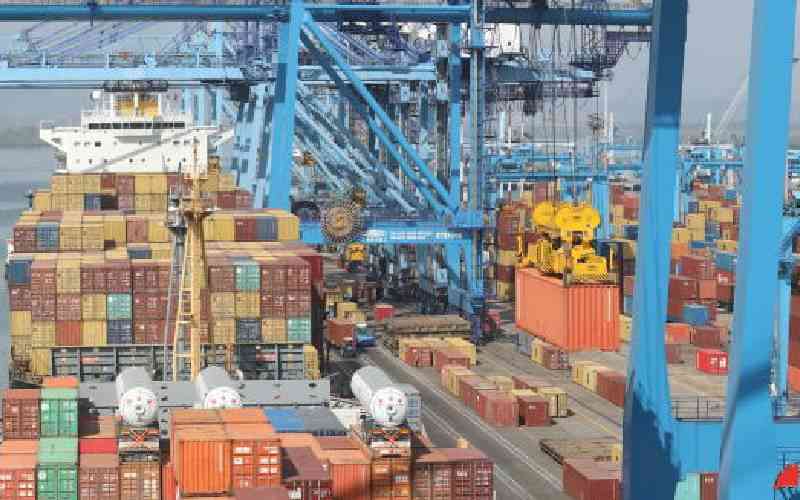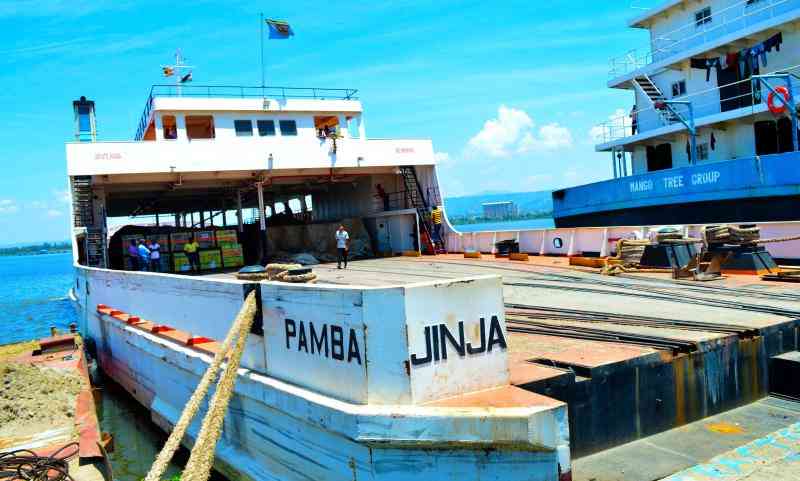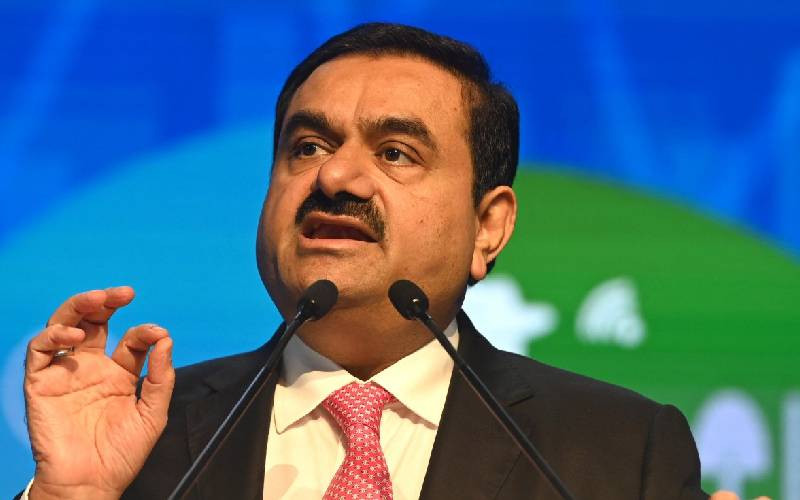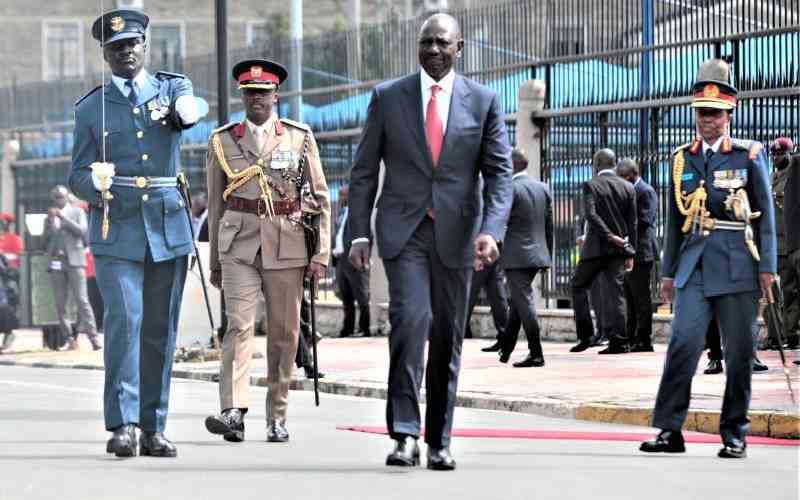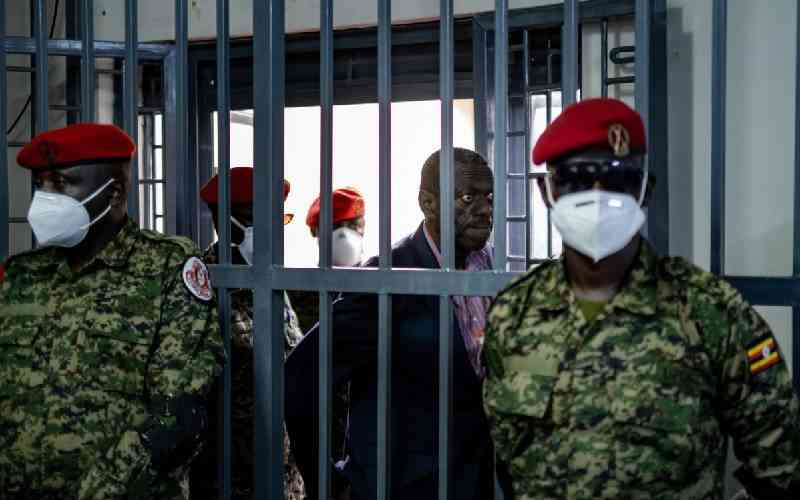NAIROBI: Mombasa is Kenya's largest and most important seaport, located in what is known as the Northern Corridor, offering an essential international maritime linkage for Kenya and the land-locked East and Central African countries of Uganda, South Sudan, Rwanda, Burundi and DR Congo.
Imports and exports to and from the five countries of the Northern Corridor go through the port of Mombasa before being transported by road or railway through Uganda to Rwanda, Burundi and Eastern DRC.
Goods to and from South Sudan are also transported through the same route from Mombasa, before branching off northwards.
The corridor also serves parts of Northern Tanzania. Currently, the Port of Mombasa on Kenya's Indian Ocean coastline has 19 functional berths with a capacity to handle over 1 million TEUs and two new container Berths with a 1.2 million TEU capacity.
Over the past few years, the container traffic has been growing at an average rate of 11 per cent per annum.
In 2014, the number of vessels calling at the port increased by 3.6 per cent from 1,768 to 1,832, total imports handled rose by 8.3 per cent from 19.2 million tonnes to 20.8 million tonnes, total exports increased by 12.8 per cent to 3.4 million tonnes, and bulk liquid grew by 10.8 per cent from 6.5 million cubic meters to 7.2 million cubic meters.
Transit traffic to the landlocked countries increased by 4.2 per cent from 6.9 million tonnes to 7.2 million tonnes, while liquid pipeline throughput expanded by 7.7 per cent (from 5.2 million cubic meters to 5.6million cubic metres) and motor vehicle imports grew by 15.3 per cent from 136,815 units to 157,856 units, according to figures from the Kenya Ports Authority (KPA).
Business leaders who gather in Nairobi for the Global Entrepreneurship Summit (GES 2015) will nonetheless find these statistics encouraging because they point to a vibrant, efficient port.
In efforts to further expand the Port of Mombasa, the KPA recently short-listed 12 firms to bid for the tender to run the second container terminal at the Port and accelerated the deadline to commission the facility from March 2016 to November this year.
The companies chosen include APM Terminals, DP World, China Merchant Holdings, and Cosco Pacific as well as several consortia.
Joint venture bids include Toyota Tsusho Corporation and Grup TCB as well as S.L. Mitsubishi Corporation and Freight Forwarders Kenya.
The first phase of construction at the new terminal is already 75 per cent complete and is now expected to be commissioned later this year, signalling immense growth of container traffic once it is completed.
This will also call for very advanced and efficient cargo handling systems to be employed at the Port of Mombasa, which is currently outsourcing some of this work to cargo freight stations.
Development works comprise the construction of two main container berths with lengths of 300 metres and 210 metres respectively. The former will be dredged to a depth of 15 metres while the latter will be 11 metres.
The Northern Corridor artery is served by a combination of transport and storage facilities that include the maritime Port of Mombasa, road and rail network, lake transport, inland water routes, inland container depots, an oil pipeline and private sector-run cargo freight stations.
Stay informed. Subscribe to our newsletter
One of the biggest and most ambitious projects that the Kenya Government has embarked on is the Lamu Port Southern Sudan-Ethiopia Transport (LAPSSET) corridor, situated in the northern part of the country.
LAPSSET is envisioned as a flagship project under Kenya's Vision 2030 socio-economic development blueprint, with an estimated cost of between $22 billion and $23 billion.
This is one of the most ambitious integrated transport infrastructure projects that Kenya has ever embarked upon. Once completed, it will provide a second transport corridor linking the port city to South Sudan and Ethiopia.
According to the project plan, there are 32 components in the LAPSSET project (including integrated infrastructure) berth Port in Manda Bay, Lamu, a Standard Gauge Railway line to Juba in South Sudan and Addis Ababa in Ethiopia, a road network, oil pipeline, crude oil refinery at Bargoni, three airports (Lamu, Isiolo and Lokichogio) and three resort cities (Lamu, Isiolo and Lake Turkana).
Lamu is located in a naturally deep and sheltered harbour and will therefore require minimal dredging to receive large Post-Panamax vessels. A 2011 feasibility study indicated that the port could be expected to handle approximately 24 million tonnes of cargo per annum by the year 2030.
The construction of the first three berths, whose contract has already been signed, presents a strong case and trigger for participation of the private sector in construction of the remaining 29 berths and other components of the corridor.
When fully implemented, the transport and logistics sector offers immense opportunities for investments as demonstrated by the growth and development focus that the Government has put in place to improve the efficiency and capacity of the transport and logistics corridors.
The areas of investment range from direct infrastructure development, private public partnerships (PPP), service provision, specialised handling and value-add services.
The LAPSSET project, with the Port of Lamu as its starting point and main component, will not only serve Kenya but also several of its land-locked neighbours through the road, rail and pipeline components of the project.
The project is likely set the pace for the expansion of regional industries seeking to offer value added products to diverse international markets.
 The Standard Group Plc is a
multi-media organization with investments in media platforms spanning newspaper
print operations, television, radio broadcasting, digital and online services. The
Standard Group is recognized as a leading multi-media house in Kenya with a key
influence in matters of national and international interest.
The Standard Group Plc is a
multi-media organization with investments in media platforms spanning newspaper
print operations, television, radio broadcasting, digital and online services. The
Standard Group is recognized as a leading multi-media house in Kenya with a key
influence in matters of national and international interest.
 The Standard Group Plc is a
multi-media organization with investments in media platforms spanning newspaper
print operations, television, radio broadcasting, digital and online services. The
Standard Group is recognized as a leading multi-media house in Kenya with a key
influence in matters of national and international interest.
The Standard Group Plc is a
multi-media organization with investments in media platforms spanning newspaper
print operations, television, radio broadcasting, digital and online services. The
Standard Group is recognized as a leading multi-media house in Kenya with a key
influence in matters of national and international interest.

